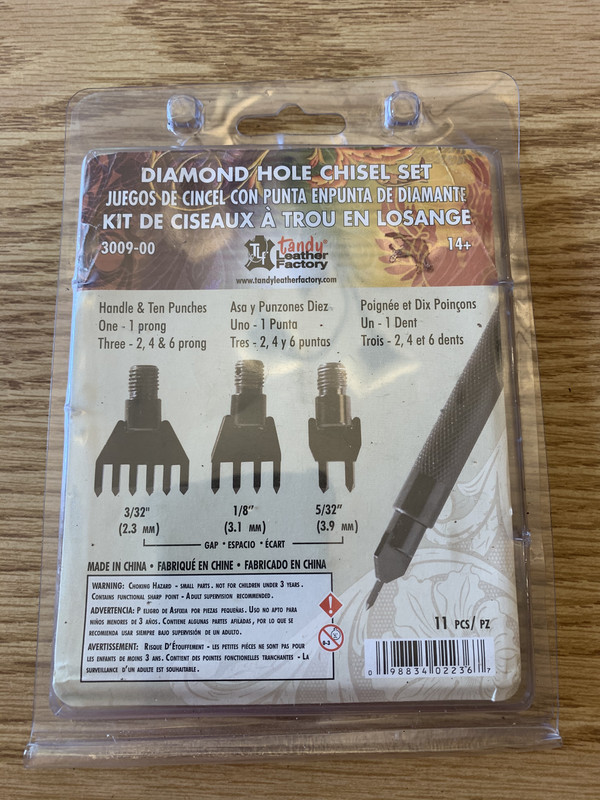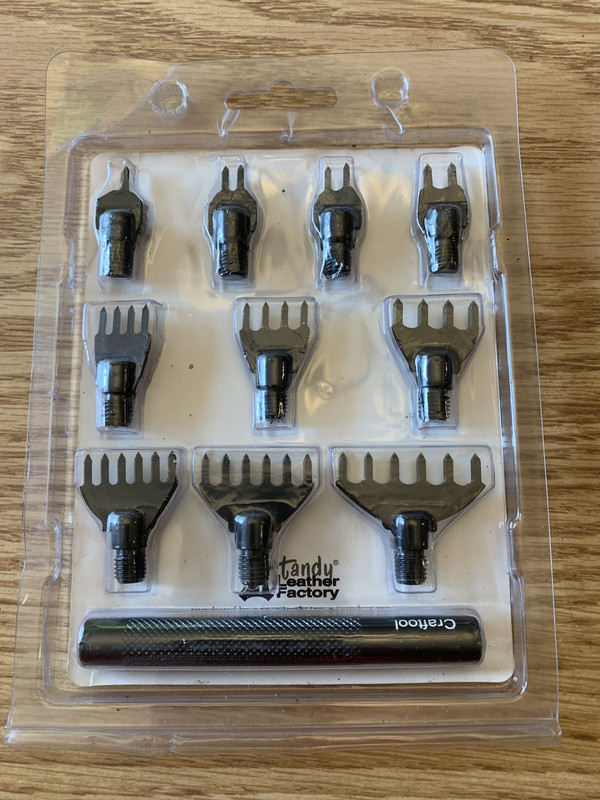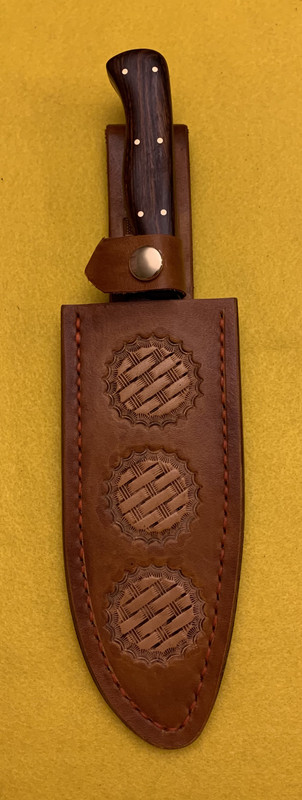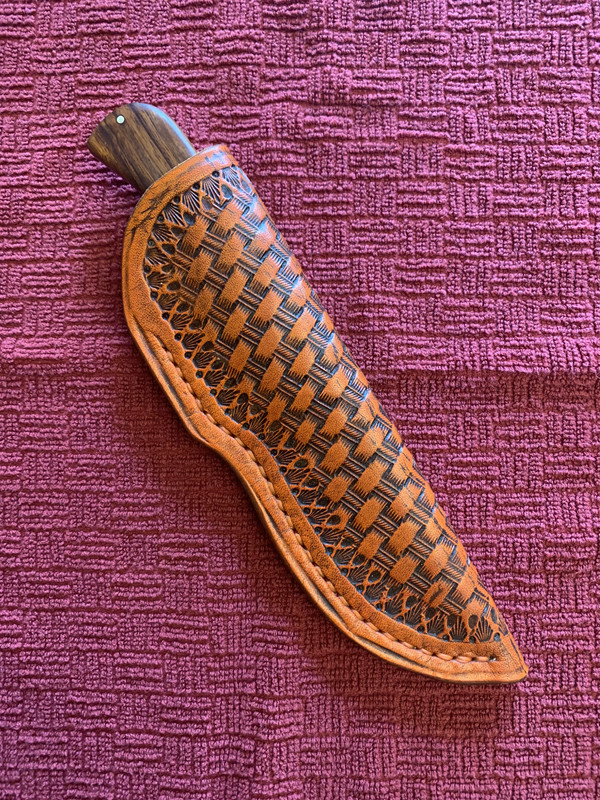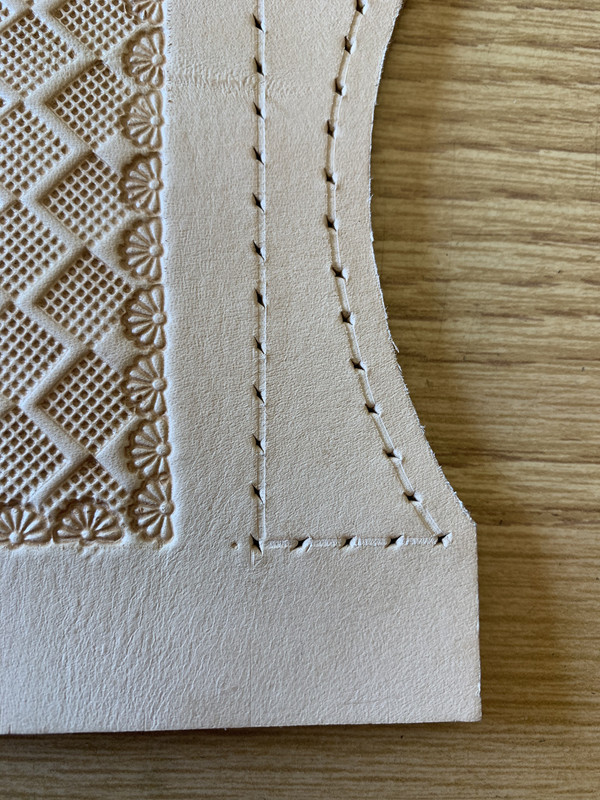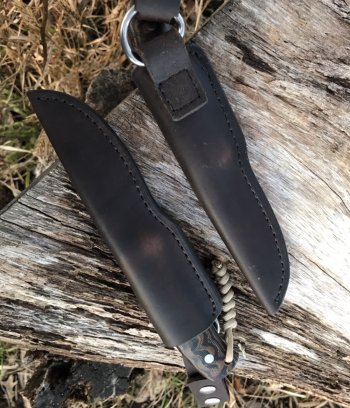Another option, that I used prior to purchasing a sewing machine.....
I'd use a #5 Star Wheel/Overstitch tool, to mark, and then I used a drill press with a bit slightly SMALLER then my needle diameters.
After drilling the holes, I then either "V" or "U" gouge them out, and saddle stitch the sheath. (Saddle stitching is using a needle on both ends of your thread).
I chose not to use the hole chisels just out of personal preference. The ones that I used were not long enough to pierce through 3 layers of 8-9oz, which was frustrating, and the round/drilled holes just looked better IMO when using waxed artificial sinew (which is what I chose to use for thread)
There's a lot of options, and I think your choices will depend on what fits you best..... things like leather types and thicknesses, all the way through the order you do things in.

